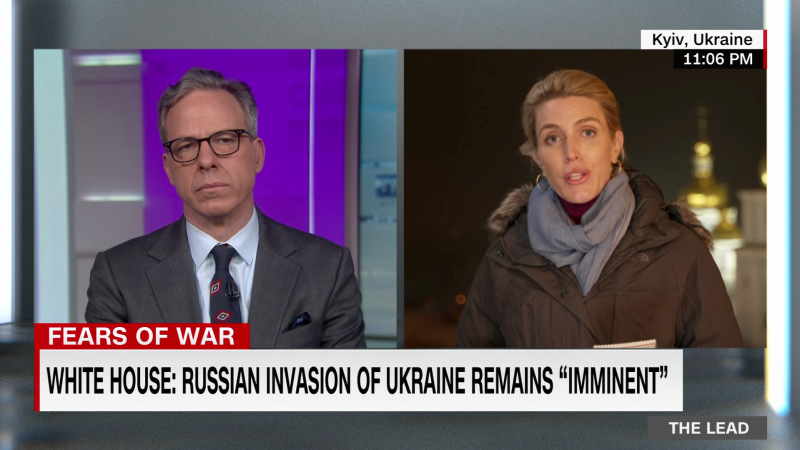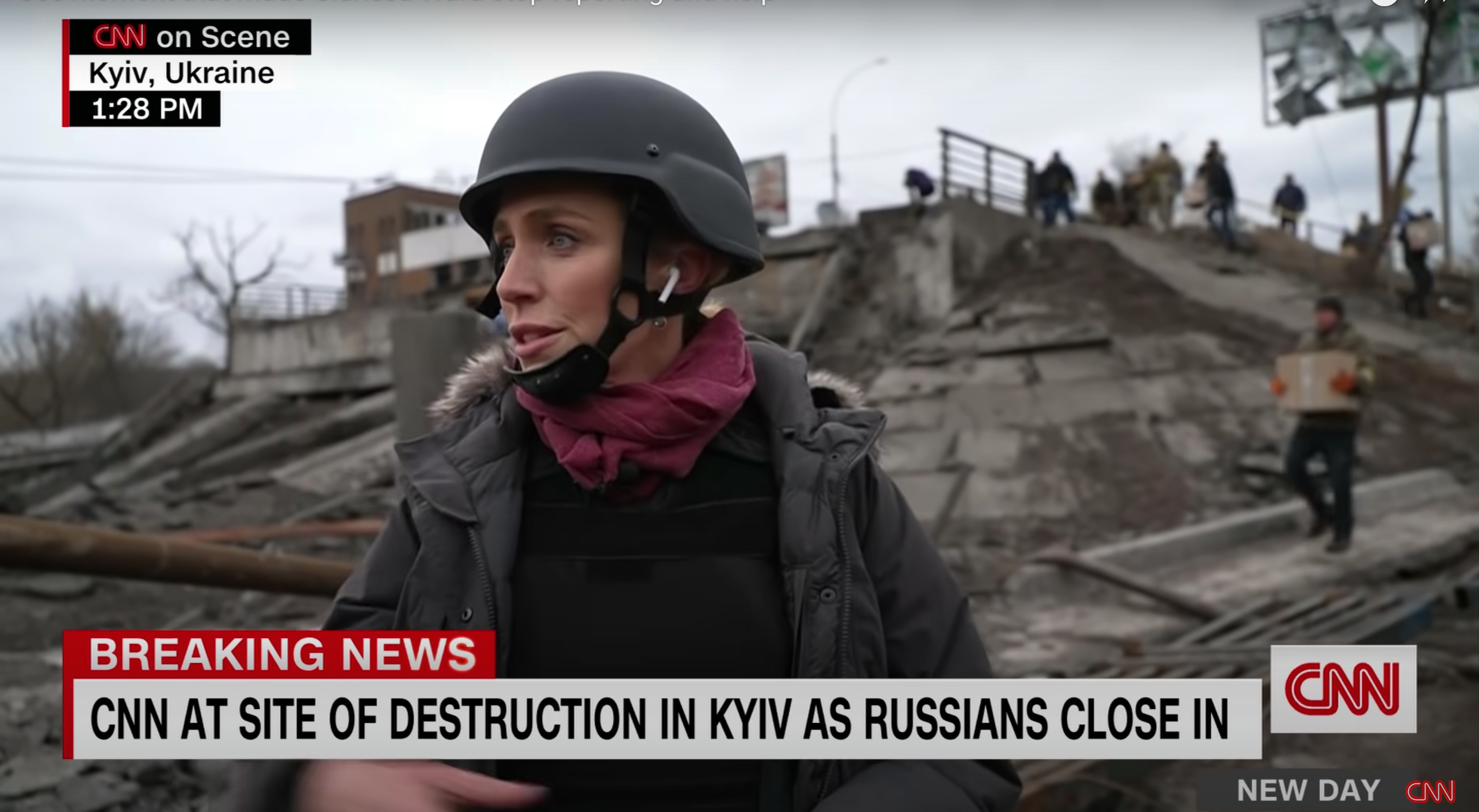How CNN’s foreign correspondent Clarissa Ward uses remote technology and local connections to report abroad
When the words “breaking news” are displayed across television screens and news apps, people around the world stop to look, their eyes glued to the screen as they wait for the story to unfold.
Clarissa Ward, CNN’s chief international correspondent, currently spearheads the news organization’s global reporting efforts, going wherever the story takes her. Recently, reporting in Ukraine, Ward captured accounts no one else was telling. The video report, “So many tears’: Ukrainian body transporter details process to give families closure” is just one of the stories she brought to light.
Ward recently went to the Israel-Gaza border to cover the conflict following Hamas’ attack where she and her crew swiftly took cover as rockets were fired, all the while still reporting live with her cell phone and an AirPod. Storybench sat down with Ward to discuss what it’s like reporting in remote areas and how her stories strengthen global democracy.
The following interview has been edited for clarity and length.
How did you get into this line of work?
Ward: I was studying comparative literature at Yale [University] and I thought that I wanted to be an actress. Two days into my senior year, 9/11 happened. I became very conscious that a lot of the skills and interests I had, from travel to public speaking and languages, might lend themselves well to a career in journalism; which, to me, at that moment felt like the most important thing that I could possibly be doing.
Why is this kind of firsthand reporting so important?
I think that it’s important because we live in an age where there is so much information available to us. Citizen journalists; everyone’s got an iPhone and everyone can be a witness to a war crime or whatever it is that might be playing out. It might sound counterintuitive, but I think more than ever when you have this mass of information, you really need trusted sources who can actually be on the ground to offer context, perspective and nuance –– and put it together in a way that is easily accessible.
With this sea of information, how do you make sense of it?
I think news organizations are facing unprecedented opportunities and also unprecedented challenges in terms of, “How do you sift through all this information?” How do you verify it? Where does it come from? Who disseminated it? Who shot it? What was the goal of doing that? What can you learn about it using open-source OSINT basic technology? How do you educate your young staffers and your old staffers as well, by the way, in terms of acquiring some of those tools? The rest of it is new technology that some of us are still struggling to get our arms around.

Being in places where resources are limited, what technologies help?
We use any and every technology that we can get our hands on that will help us deliver a better product quicker. In Ukraine, for example, Starlink has been hugely helpful to us, particularly when you’re reporting from places that are more remote or closer to the front lines or where you wouldn’t want to have your cell phone on; where you might not have cell phone reception, even if you did have it on.
If it’s a day-of-air news story, certainly we would be editing in the field. We’re doing live shots from on the ground in some very remote places. We have a piece of kit called a Live View that basically uses multiple SIM cards and allows us to do live shots from all different sorts of places. We also still rely on a trusty old piece of kit called a BGAN, which is basically like a portable satellite that might not be your first choice for the best quality, but it works. So, there’s not one hard and fast rule about one piece of kit that we always want to use.
How do you rely on investigative groups and private contractors?
We’re living in a very different world than we were a decade ago. You have lots of investigative groups, whether it’s the Dossier Center or Bellingcat or All Eyes on Wagner. There are a number of these groups that have really changed the landscape. When we’ve collaborated with them in the past, you first and foremost need to be completely transparent about what you’ve done with the audience. You don’t try to take credit for something that you didn’t work out, and you also don’t try to claim that something is 100%.
How does your reporting help global democracy?
A free and vibrant press is [a] cornerstone of any liberal democracy, not only in terms of holding people accountable but also in terms of making information accessible to people. Obviously, it’s not a perfect science. We have seen how divisive the rhetoric has become in many places and how polarized our society has become. These are very real challenges that face us as journalists. My personal perspective is that you need to … get on with doing your job and keep doing the best job that you possibly can to give people the highest quality information.





